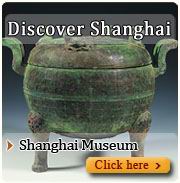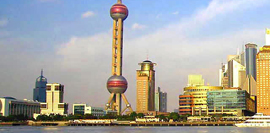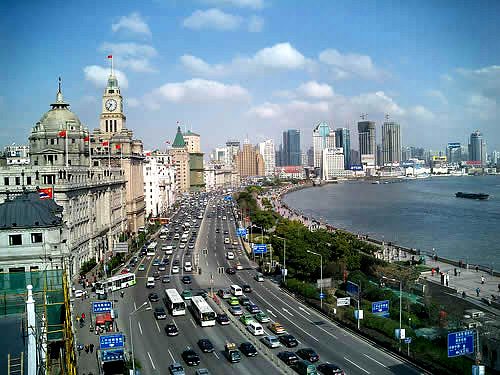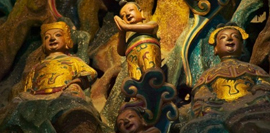An ancient township built on water in the Qingpu District. Heading southwestward of Shanghai. The buildings along the road became less in number and lower in size; and the fields became more open than the urban area we were traveling from. The aroma of grass came to us; and after some 40 kilometers of driving, a small river came into view. The banks were green, and the water was tranquil. The zigzagging river led us to a small town with white walls and gray-tiled houses. 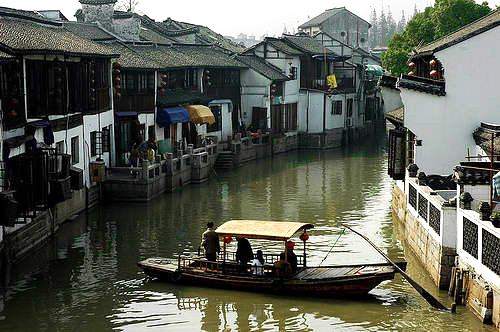 This is Zhujiajiao.
This is Zhujiajiao.
The place was just like I had expected an ancient township on the lower reaches of the Yangtze River to be like. The first bridge we passed was named Fangsheng, which means freeing captive animals. Bathing in the morning glow, the bridge looked like a rainbow over the peaceful, flowing river. It stood out from the gray-tiled houses. There was a temple by the bridge where visitors would buy captive fish or turtles and set them free after worshipping. This is how the bridge was named.
Although the temple does not exist now, there are two ancient gingkoes marking the site. At the end of the bridge there is a wooden corridor, near which there are square tables. People were having breakfast there. The morning market at the end of the bridge was not yet over. The voices of hawkers and customers bargaining in the soft local dialect lingered over the river. The air was filled with the smell of fish and the aroma of green fields, and in it we saw a vivid picture of Zhujiajiao.
The ancient township was a commercial center during the Song (960-1279) and Yuan (1271-1368) Dynasties. Markets could be found along the riverside thanks to its convenient water transportation. The township became one of the largest commercial centers on the lower reaches of the Yangtze during the Ming and Qing Dynasties (1368-1911); and that explains why there are so many buildings in the style of both eras.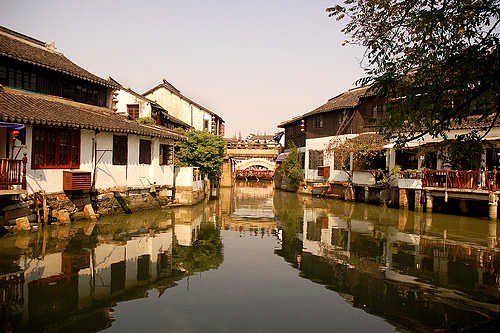
We visited some houses and were deeply impressed by both the simple yet elegant furniture inside and the exquisitely carved bricks and window frames outside. While in the town, we probably entered the former residence of a celebrity who might have been a successful candidate in the highest imperial examinations or a distinguished scholar in modern China, without even knowing it. Every piece of brick and tile added a strong, cultural feel to the township.
The streets of Zhujiajiao have retained their original structure. The granite-laid roads seem to be polished. The narrow streets are sandwiched in between brick and wooden two-story buildings. The roofs seem to be connected to one another. Shops are lined next to one another.
Because we were strangers, the local residents usually greeted us with a smile instead of doing business with us. Most of the houses were built on the water. The people living along the banks often open their windows and chat. Thanks to the river, laundry and shopping are very convenient. "There are 36 small bridges here," someone told me; and each bridge has its own style. We could hardly remember how many bridges we had crossed. Looking into the river, I saw the reflection of the white walls and gray-tiled houses, as well as old ladies with bent backs holding baskets in their hands while crossing a stone bridge. Occasionally, a little boat would pass casually on the river. It seemed as if I was visiting a township back in the last century; and my mind in tumult was put at ease by the peace and tranquility of Zhujiajiao.
Photographers and painters have recorded the peaceful and tranquil nature of this town. In recent years, the ancient township has drawn famous directors from China and other parts of the world. So far, some 60 films and TV dramas have been produced here. Therefore, it is also known as the Hollywood of Shanghai and the Natural Film Studio.


